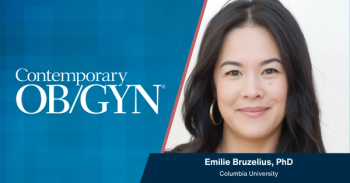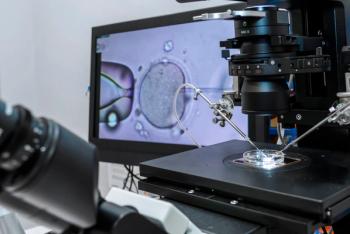
Benign Breast Mass Not So Benign After All
New evidence reveals that risk prediction for breast cancer is imperative in women with atypical hyperplasia of breast tissue.
A "benign" mass found in breast tissue known as atypical hyperplasia, or atypia, carries a greater risk of cancer than previously believed, a new scientific review found.[[{"type":"media","view_mode":"media_crop","fid":"31000","attributes":{"alt":"","class":"media-image media-image-right","id":"media_crop_2209346301387","media_crop_h":"0","media_crop_image_style":"-1","media_crop_instance":"3270","media_crop_rotate":"0","media_crop_scale_h":"0","media_crop_scale_w":"0","media_crop_w":"0","media_crop_x":"0","media_crop_y":"0","style":"line-height: 1.538em; float: right;","title":"Very high magnification of atypical ductal hyperplasia. Copyright © 2011 Nephron.","typeof":"foaf:Image"}}]]
Given the significantly increased lifetime risk of cancer among women who have atypical hyperplasia, the researchers suggest that clinicians consider having those patients undergo MRI screening to better detect malignancies.
Key Points:
- Women with atypical hyperplasia have an increased absolute risk of developing breast cancer, new research suggests.
- Given this increased risk, clinicians should consider having patients with atypia undergo MRI screening to better detect malignancies.
"By providing better risk prediction for this group, we can tailor a woman's clinical care to her individual level of risk," said Lynn Hartmann, MD, an oncologist at Mayo Clinic and lead author of the study, in a news release. "We need to do more for this population of women who are at higher risk, such as providing the option of MRI screenings in addition to mammograms and encouraging consideration of anti-estrogen therapies that could reduce their risk of developing cancer."
Hartmann and her research team found that after 5 years, breast cancer had developed in 7% of women with these so-called benign lesions. After a decade, 13% of the women had the disease. After 25 years, 30% of women with atypical hyperplasia had breast cancer.
According to the study authors, this new study goes further than previous research, which showed that women with atypia have a 4-fold to 5-fold increased "relative risk" when compared with women who don’t have the lesions. This new study, however, looked at absolute risk by following the patients with the lesions over time and analyzing the chance of breast cancer developing.
The study was conducted by looking at the medical records of 698 women with atypia that was biopsied at Mayo Clinic between 1967 and 2001.
Newsletter
Get the latest clinical updates, case studies, and expert commentary in obstetric and gynecologic care. Sign up now to stay informed.
















